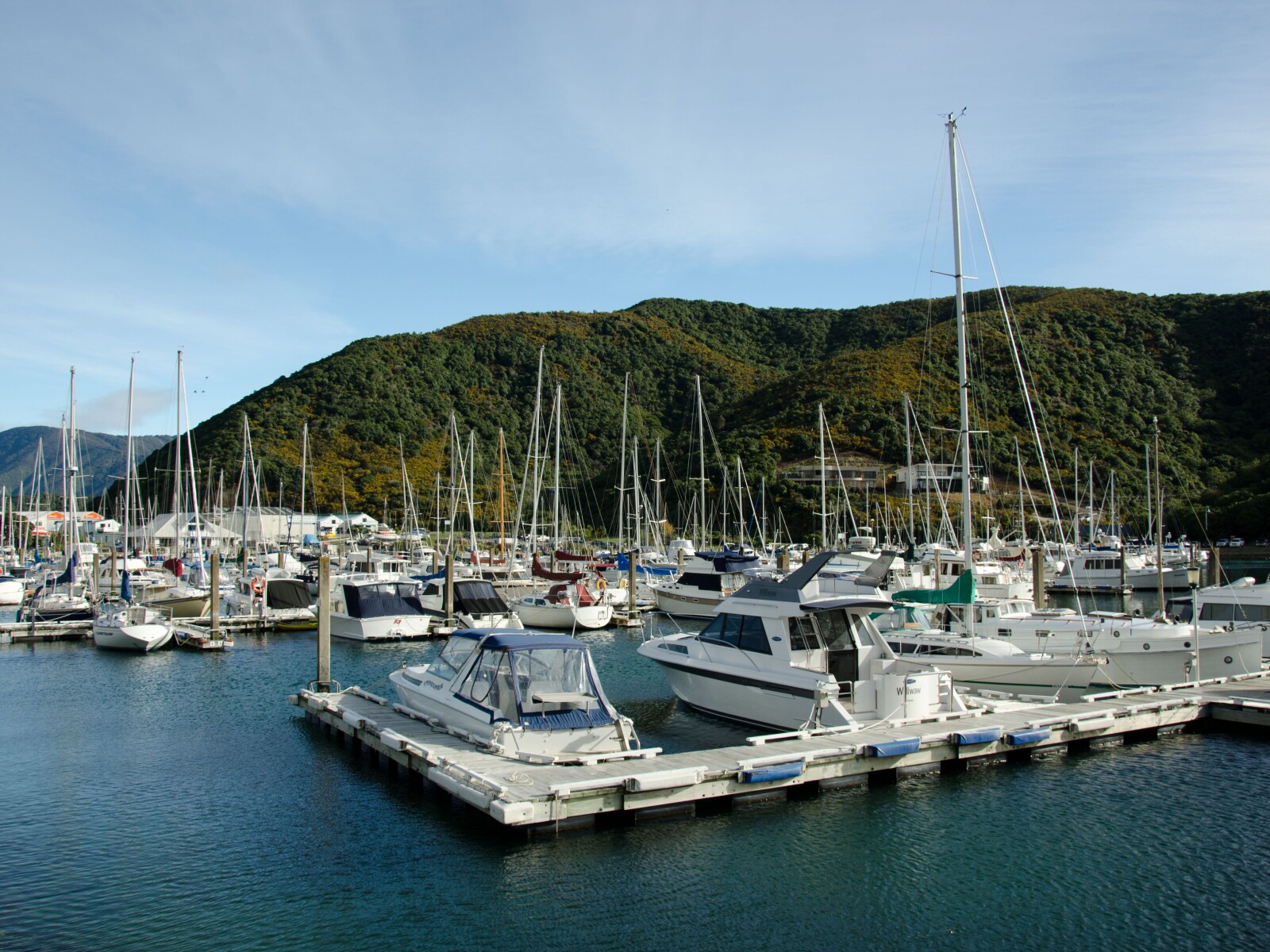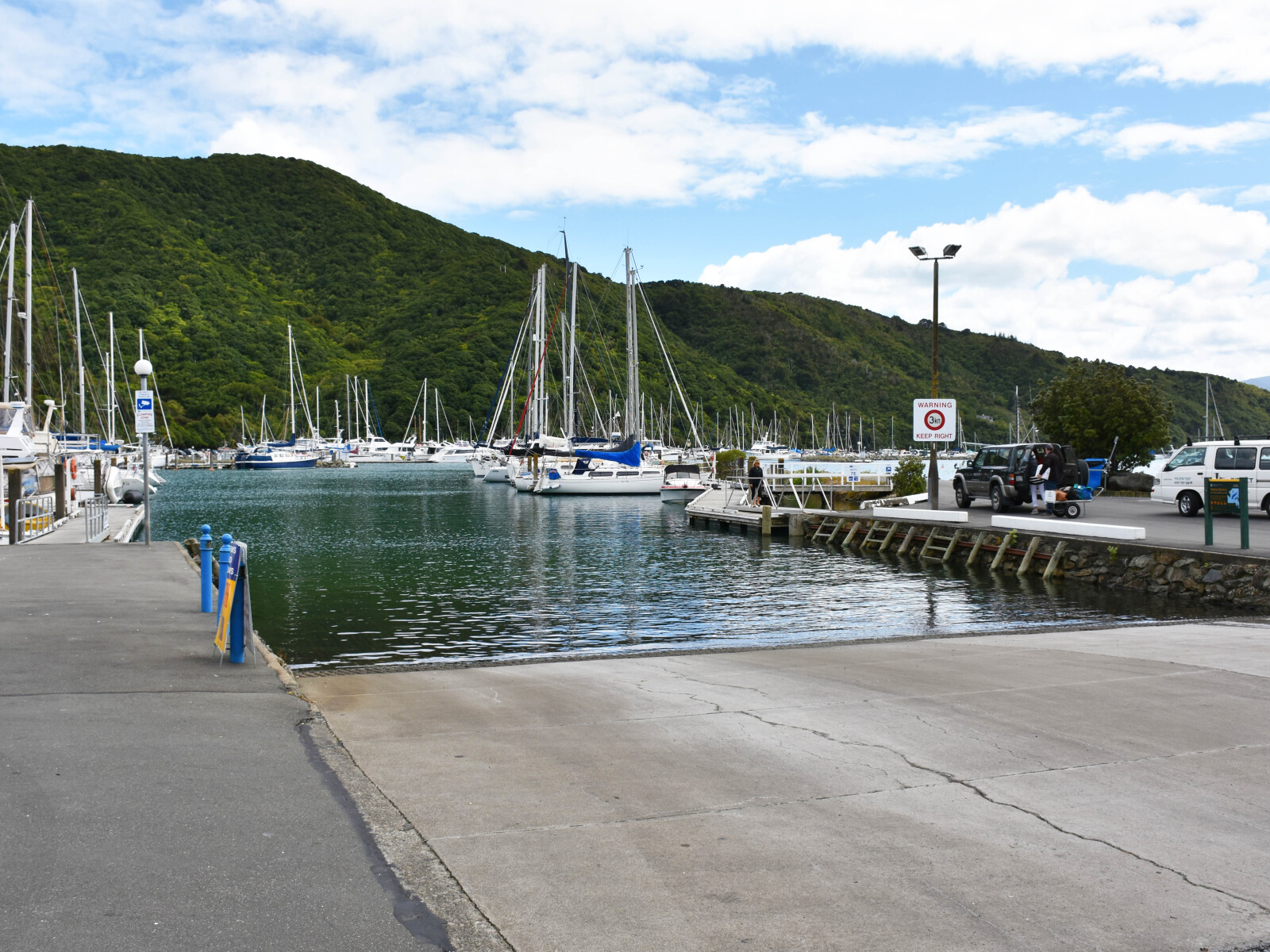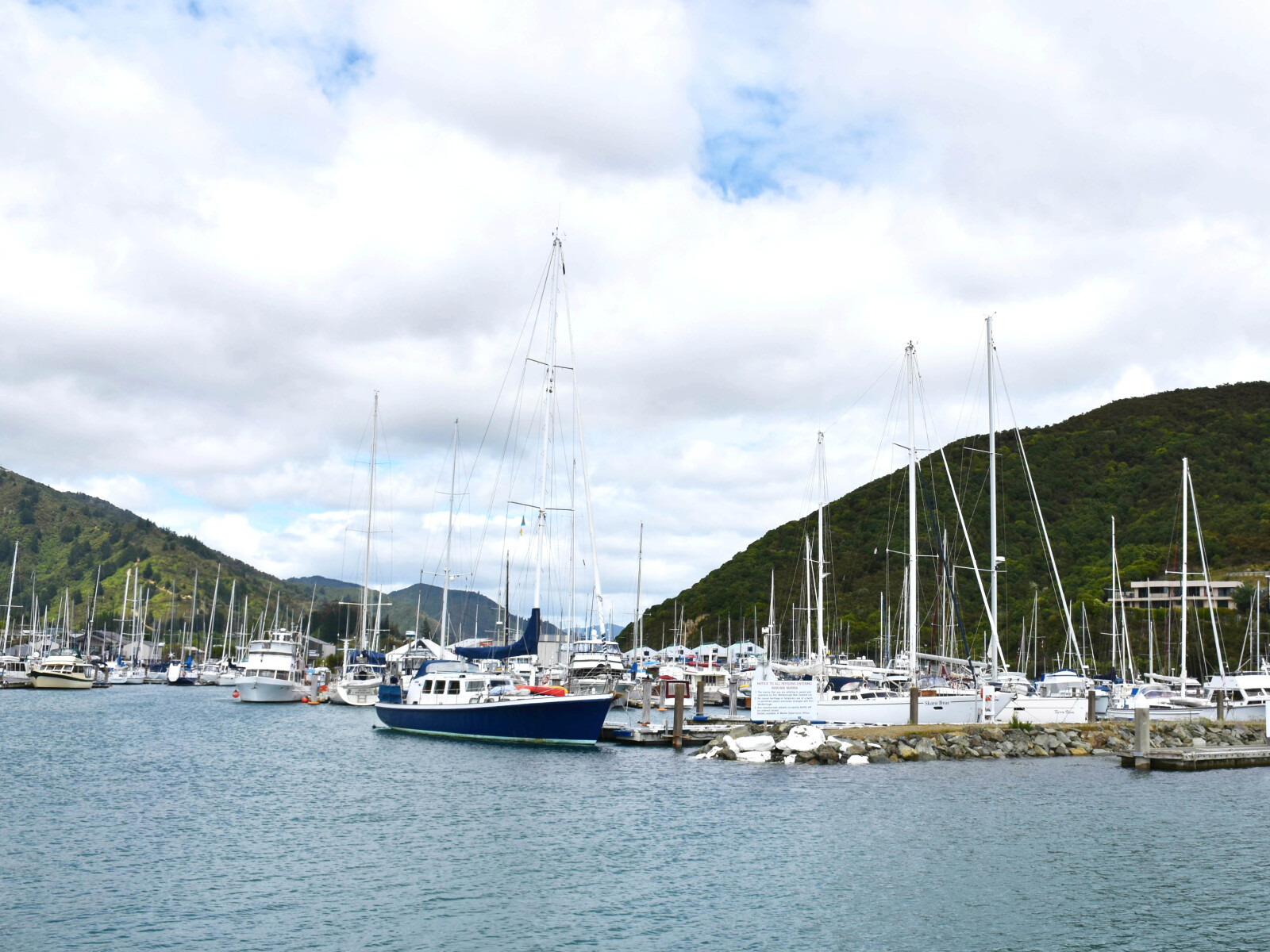The name, Waikawa, means bitter water.1
Waikawa Marina, the third-largest floating marina in New Zealand, is located in the south-western end of Waikawa Bay, Picton.
It is operated by Port Marlborough and provides over 600 berths, all with power and water. Toilets and adequate parking are available, with showers accessible at the Waikawa Boating Club premises.
There is a chandlery, sail maker, dive shop, boat sales and charter companies, restaurants, marine repair shops, travel lift and trailer boat launching ramp adjacent to the marina.
See the Marlborough Marinas website for more information about Waikawa Marina
Biosecurity
Invasive marine pests are a threat to Marlborough’s coastal environment and aquaculture industry and marinas are busy locations of potential transfer.
The marine pest clubbed tunicate (Styela clava) is known to be established in the marina.
The highly invasive Mediterranean fanworm (Sabella spallanzanii) was also detected in 2019. Fortunately, a rapid biosecurity response and ongoing surveillance has prevented its establishment.
The easiest way to reduce risk of further marine pest spread into and around the Sounds, is to ensure your hull is maintained to no more than a slime layer when arriving and/or departing the marina.
Good hull maintenance means lower fuel use, limits the spread of marine pests and gets you to your destination faster.
Additional requirements exist for craft coming into the Sounds or returning to the Sounds after a period of time elsewhere. These craft must ensure that any fouling on the hull does not exceed ‘light fouling’ as defined by the Regional Pest Management Plan 2018, rule 5.18.2.1.
Go to the Marine Biosecurity page on the Marlborough District Council’s website for more information on marine pests
Go to the Mediterranean fanworm (RPMP 2018) page on the Marlborough District Council’s website for more information on rule 5.18.2.1
1. H. A. H. Insull, Marlborough Place Names, (Wellington: A. H. & A. W. Reed, 1952) 67.






